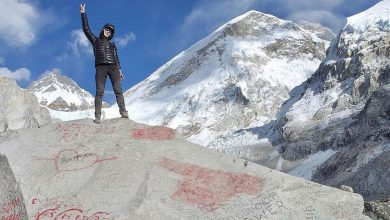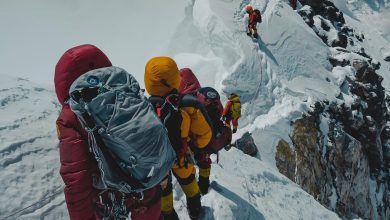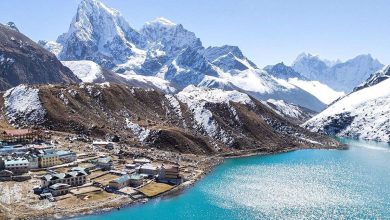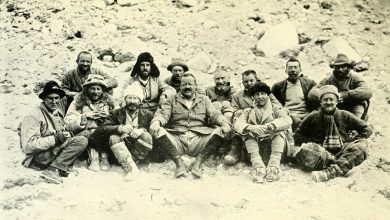How Long Does It Take To Climb Mount Everest?
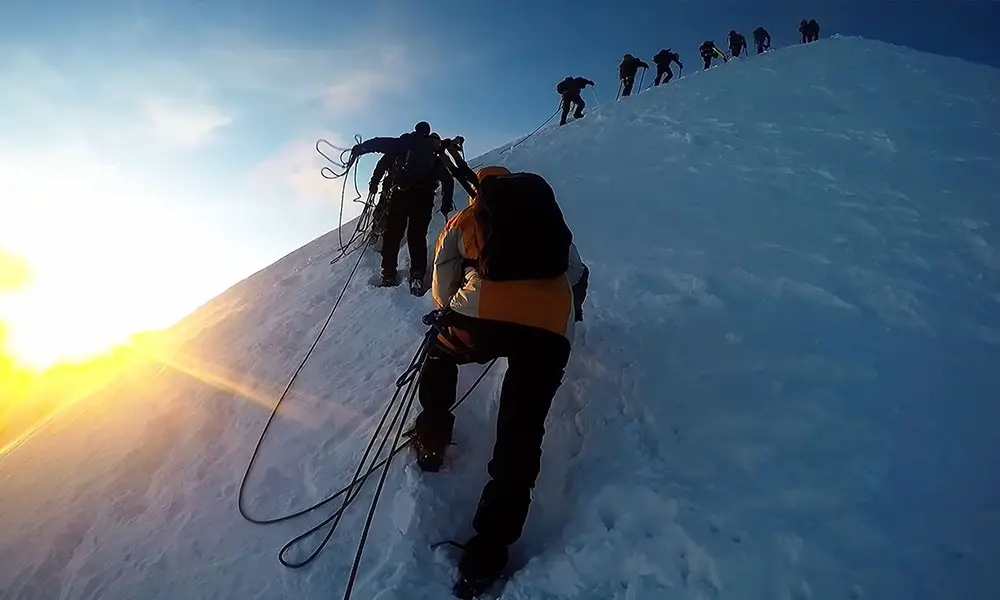
Many mountaineers dream of climbing Mount Everest, the world’s highest peak. But it is not an easy job. Mount Everest Expedition comes with a price that is not negotiable. The risk factors like potential death, altitude sickness, frostbite, HACE, and HAPE alert every climber who plans for this adventurous journey. One important thing to know about climbing Everest is while the journey symbolizes the pride of heroic activity or bravery, it also has a negative side of risk and challenges. But if a climber is set to embark on this journey, how long does it take to climb Mount Everest?
Climbing Mount Everest might take around 2 months. But several things can influence the duration of this expedition, which we will discuss in the blog below. But knowing about Mount Everest and its surrounding region is essential to embark on a safe journey. Here is a comprehensive blog about the total time to climb Mount Everest and how and where to start the journey.
Explore in detail!!
Understanding Mount Everest
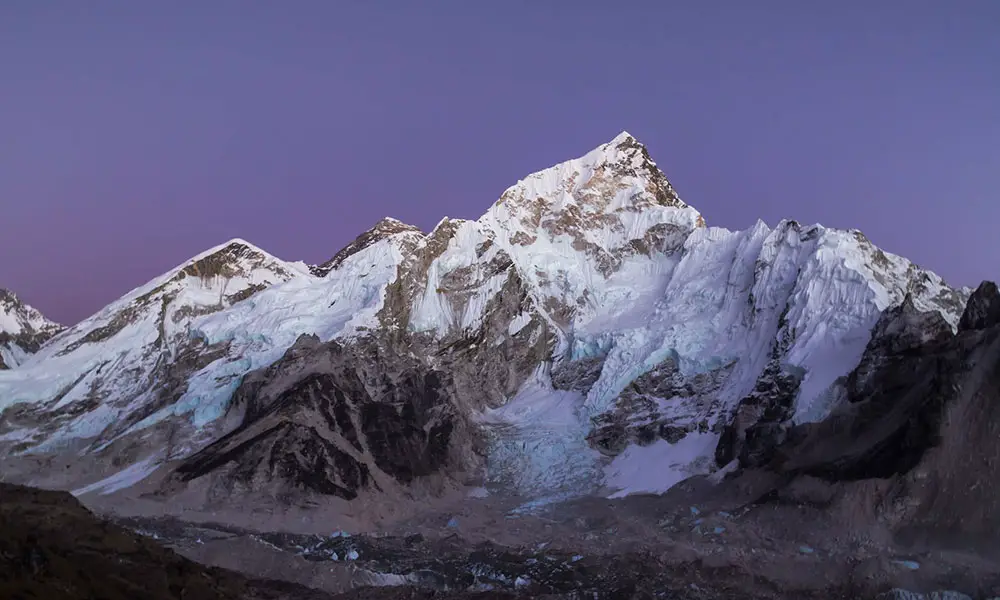
Being the tallest peak in the world, Mount Everest is a dream destination for many adventure seekers who are mountaineering enthusiasts. And it is a fact that the peak is a towering pinnacle of the Himalayas which tests the climber’s endurance and stamina. On top of that, it is an emblem of natural beauty and awe-inspiring grandeur.
The mighty Mount Everest stands at 8,849 meters (29,030 feet) above sea level. It is famous for its towering elevation, magnificent vistas, and unprecedented challenges. The highest peak is in the Khumbu Region of Solukhumbu District, Nepal. It stands still amongst many other peaks in the Mahalangur Mountain Range, straddling the border between Nepal and Tibet (Autonomous Province of China).
Mount Everest is called ‘Sagarmatha’ in Nepal, which means ‘the Head in the Great Blue Sky.’ ‘Sagar’ means ‘Sky,’ and ‘Matha’ means ‘Head’ in Nepali. Thus, the etymological meaning of ‘Sagarmatha’ is Head Touching Sky, which also means the highest point on the planet. In Tibet, it is called ‘Chomolungma,’ which means ‘Goddess Mother of the World.’ Everest has cultural and religious significance; local people worship it as the Goddess. Some even call the three peaks (Mount Everest, Nuptse, and Lhotse) Chomolungma.
Mount Everest was named after the British Surveyor George Everest in 1865 AD. George Everest led the survey team led by the British India Government in the 1800s. Before that, Everest was called the ‘14th Peak’ and was not recognized as the highest peak. Kanchenjunga was considered the tallest peak until the British Survey team explored K2 in Pakistan. However, K2’s record was broken by the 14th Peak in 1865 as The Royal Geographic Society officially announced Everest as the tallest peak in the world.
The route to the top of the peak is strenuous. However, the summit offers an unparalleled view of the surrounding mountain range and the Himalayan experience. During the climb, mountaineers are welcomed with the views of numerous attractions like Khumbu Icefall, Rainbow Valley, and Sherpa Culture. Though the journey to Mount Everest is challenging, it has always symbolized natural beauty and the triumph of the human spirit.
How Long Does It Take To Climb Mount Everest?
If you are looking for answers, how long does it take to climb Mount Everest? Here is your answer. Climbing Mount Everest requires a lot of time allotment and preparation. It might depend on the climber’s expectations, level of preparation, choice of guides and porters, and itinerary. But on average, the Everest expedition lasts anywhere between 6 to 10 weeks.
Typical Timeframes for Climbing Mount Everest
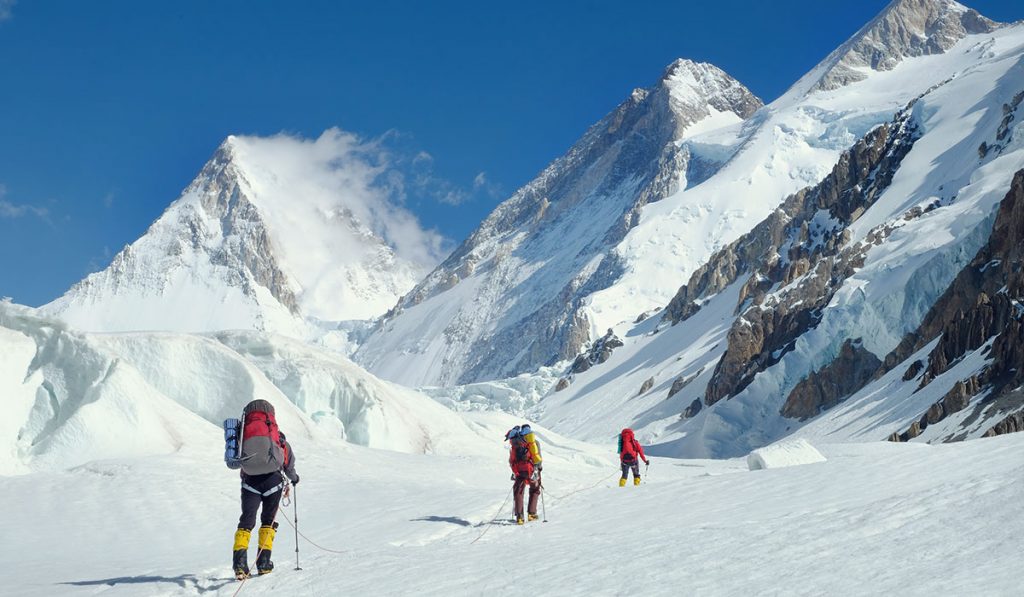
Mountaineers set many timeframes to climb Mount Everest. This allows climbers to lead a strategic and systematic climbing journey, which is safe and reliable. There are usually four different timeframes to get to the top of Mount Everest. They are:
- Preparatory Phase
- Camp Progression
- Summit Push
- Descending
Here is how climbers set on their journey through each of these phases and what activities they operate for a safe climb:
Preparatory Phase
There is a partial distinction of the Everest Expedition. The preparatory phase is the initial phase of Everest Climbing. It is a period before the actual climb begins. If you see the trend of mountaineering, climbers usually allocate initial time to reach Everest Base Camp from Kathmandu. Moreover, it includes cross-culture activities, sightseeing, and acclimatization in Namche Bazaar and Dingboche. This process usually takes two to three weeks.
The journey starts with a flight from Kathmandu to Lukla and then a trek to Everest Base Camp. The Everest expedition is an extended version of Everest Base Camp Trek with a package of reaching the top of the peak. Climbers have to pass through the settlements, such as Phakding, Namche Bazaar, Tengboche, Dingboche, Gorakshep, and Everest Base Camp, before initiating their climb. But the important thing to consider here is that EBC Trek might not need technical climbing skills, but climbing Everest does. So mountaineers should ensure they are well-trained and have extensive mountaineering skills before attempting this journey.
Camp Progression
The Everest Expedition is a strategic journey. Climbers usually establish several camps to reach the top of the mountain. These camps are mainly used for staying overnight, resting, and acclimatization. This journey starts with altitude and technical skill training at Everest Base Camp. Climbers gradually elevate their altitude as they climb uphill through the sharp blue-iced ridges and sloppy landscapes. There are four camps between the base camp and the top of Everest.
Camp I is located at 6,065 m (19,900 ft). It is mainly used as a temporary camp, where climbers usually stay only one night. Camp II is 6,400 m (21,300 ft), also called an Advanced Base Camp (ABC). To reach Camp II, climbers have to pass through a huge crevasse, and if the climb is on a sunny day, the hot temperatures can affect the pace.
Camp III is located on the South Col. at 7,920 m (26,000 ft). Mountaineers must overcome two major obstacles to Camp III, “Geneva Spur” and “The Yellow Band.” After successfully crossing Camp III, climbers will reach Camp IV at 8000 m (26000 ft). It is one of the scariest parts of the Everest Expedition since the Rainbow Valley: The Death Zone lies at this altitude. There are numerous records of climbers losing their lives in the Death Zone.
Summit Push
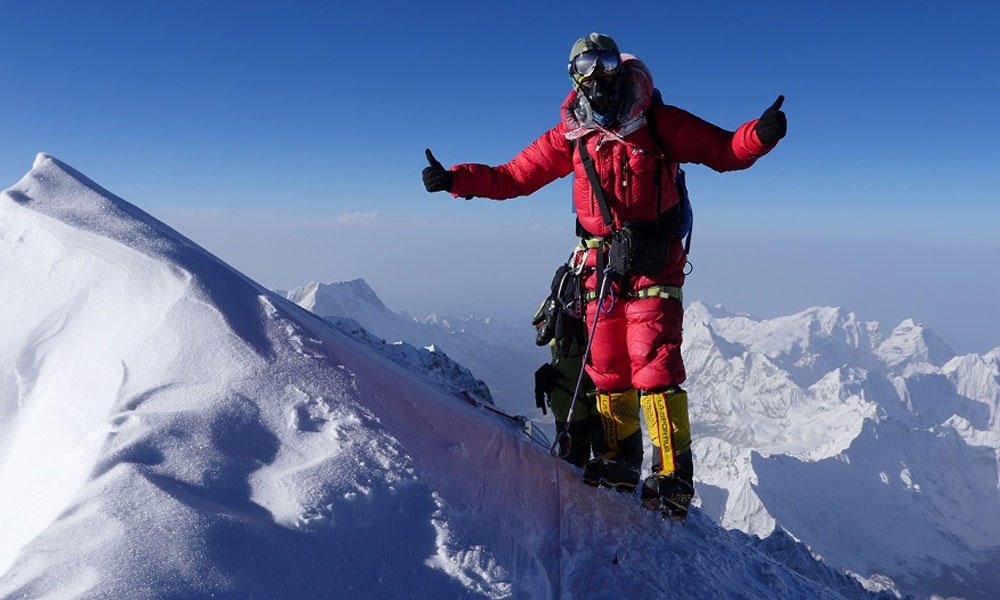
This phase of climbing Mount Everest is done from Camp IV at 8000 meters above sea level. It is still around 900 meters below the top of the mountain, one of the most strenuous parts of the expedition. At first, climbers reach The Balcony at 8,400 m (27,700 ft), where they can rest and take 360 views of the surroundings. The South Summit Peak sits just some distance ahead at 8,750 m (28,700 ft).
The ‘Cornice Traverse’ awaits the mountaineers with irregular landscapes of snow. This is one of the most dangerous parts of the expedition; there are fixed ropes set by the Sherpas to make the climb more accessible. Tenzing Norgay Sherpa and Edmund Hillary were the only two climbers who climbed through the Cornice Traverse without fixed ropes.
After crossing the Cornice Traverse, climbers can finally reach the top of Mount Everest. The total time to reach the summit from Camp IV is around 8 to 12 hours. Normally, mountaineers spend around half an hour at the summit, depending on their physical condition and oxygen supplements. One of the most important things to notice is that you cannot initiate Summit Push during bad or extreme weather. The weather must be stable; if it goes bad, it is advised to descend to lower camps for safety.
Descending
Last but not least, mountaineers continue their descending process from Mount Everest to Base Camp and Lukla Airport. Usually, mountaineers follow the same route to return to base camp.
Everest Expedition | How It Started?
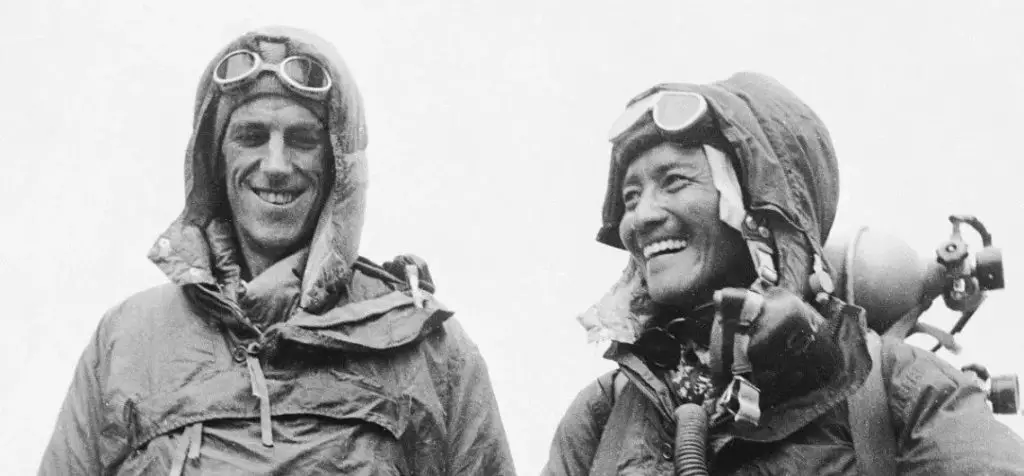
Everest expedition projects were initiated in the 1920s. The first person to attempt the climb was George Mallory in 1922 AD, which he failed. Later, he again tried climbing Everest with Andrew “Sandy” Irvine. They started their journey from the Northeast Ridge of Everest but never returned. They were last seen approximately 800 vertical feet (245 m) from the top of the Everest. It still remains a mystery whether the duo successfully reached the top or not.
There were several expedition campaigns to Mount Everest, which went in vain. The British and Swiss Teams were the leading competitors to get to the top of the mountain. Later, on May 29, 1953, Tenzing Norgay Sherpa and Edmund Hillary of the British Summit Team successfully climbed the peak. Since then, climbing Mount Everest has been commercialized, and more than 11,346 summit accents have been recorded till July 2022. Six thousand ninety-eight climbers made these attempts, of which only around 39% of the success rate has been recorded.
To this day, 310 people have lost their lives attempting to conquer this mighty peak of the Himalayas. Some famous climbers are Francys Arsentiev (The Sleeping Beauty), George Mallory, David Sharp, Rob Hall, Scott Fischer, Tsewang Paljor, Shriya Shah-Klorfine, and many others.
Factors Influencing Climbing Time
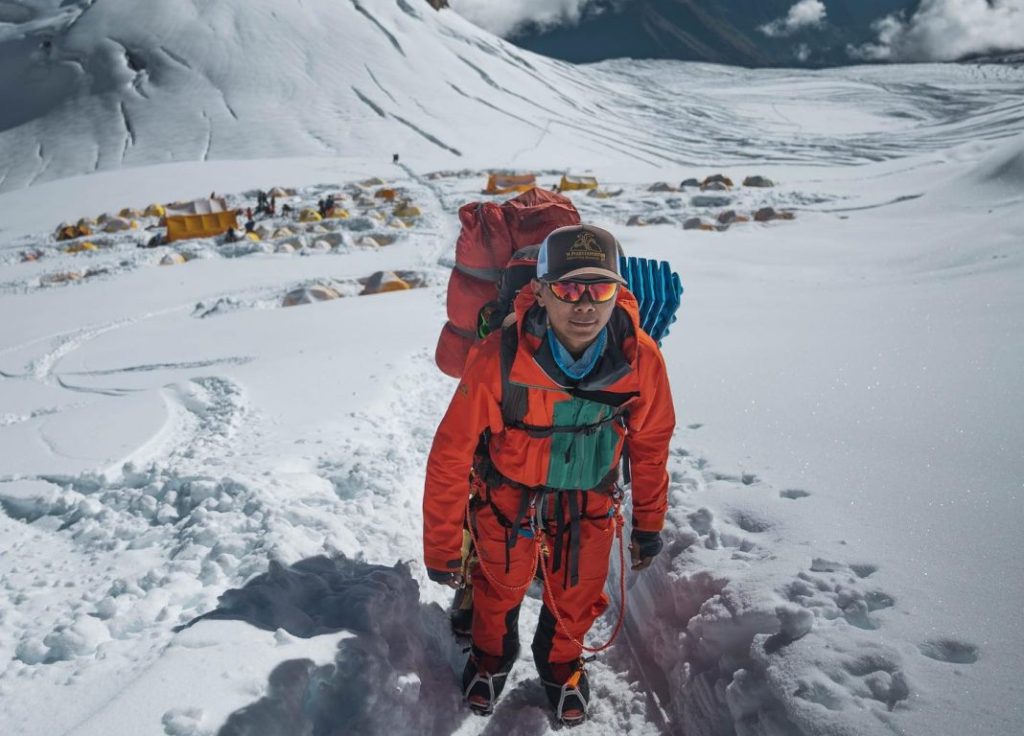
We have already discussed how long does it take to climb Mount Everest. Now let’s talk about the factors that influence the climbing time. There are several things climbers should consider before attempting to climb Mount Everest. Here are some of them:
Physical Fitness and Acclimatization
Climbing Everest is challenging, and climbers must be physically fit to embark on this adventurous journey. Physical health, endurance, stamina, strength, and energy are crucial for Everest Expedition. The reason is simple; Everest Expedition is a lengthy journey of around two months. And this journey is physically and technically challenging. Reaching Everest Base Camp alone is a challenging part of the expedition. And the addition of the technical climb to the top of the mountain poses even more risks and challenges. The slippery blue ice, steep and sharp ridges, and rocky and skyscraping landscapes are obstacles climbers encounter.
Traversing through these obstacles needs a high level of physical fitness. It is necessary to have extensive mountaineering experience and technical skills for this. The climb can be exhausting since climbers often have to embark on a long journey through treacherous parts of Everest. That’s why acclimatization is crucial for the climb. Here is how you can acclimatize:
- Gradual Ascent
- Hydration
- Rest and Recovery
- Climbing High, Sleeping Low
- Adequate Rest and Sleep
- Proper Nutrition
- Medications
- Listen To The Instructions of Guide
It is evident that climbers with great physical abilities and mountaineering backgrounds find it easier to climb Everest than others. We recommend every climber undergo mountain climbing training and embark on a low altitude peak climbing. It will allow them to have the Himalayan experience and learn about the necessities and perks of preparations before the expedition.
Climbing Route
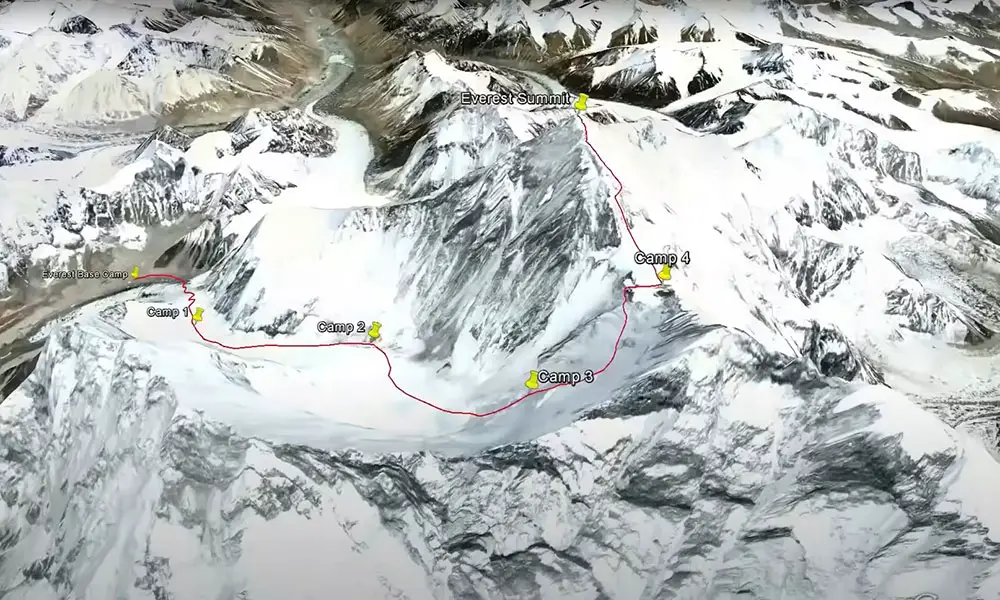
There are three major faces to reach the top of Everest from Nepal. They are North Face, East Face, and Southwest Face. Besides, Everest can also be climbed from the Tibet side, consisting of The Tibetan North Face and The Tibetan East Face or Kangshung Face. Altogether, 18 routes from Nepal and Tibet lead climbers to the summit.
Among these 18 routes to Everest, the north face, also known as the Northeast Ridge (starting in Tibet), is the hardest. The South Col Route is preferable from the Nepal side, which still poses great risks and threats to mountaineers. Places such as Yellow Band, Geneva Spur, The Balcony, and Hillary Step are challenging obstacles to traverse while climbing Mount Everest.
Weather Conditions
Everest is well-known for unpredictable weather conditions. The weather pattern can drastically change quickly, leading to obstacles and delaying climbing. High and sharp winds, freezing temperatures, heavy snowfall, rain precipitation, cloud cover, lack of visibility, and storms can impact the summit push.
The extreme weather condition can also lead to altitude sickness, HACE (High Altitude Celebral Edema), HAPE (High Altitude Pulmonary Edema), frostbite, and other health hazards. Besides, rockfalls, avalanches, and other natural calamities can increase the chances of mishaps. It is essential to look into the weather forecast before starting the summit of Mount Everest. Acclimatization is crucial for this, as it can help climbers adjust to the altitude. On top of that, mountaineers should prepare with safety measures, medications, and emergency evacuation support.
When To Climb Everest?
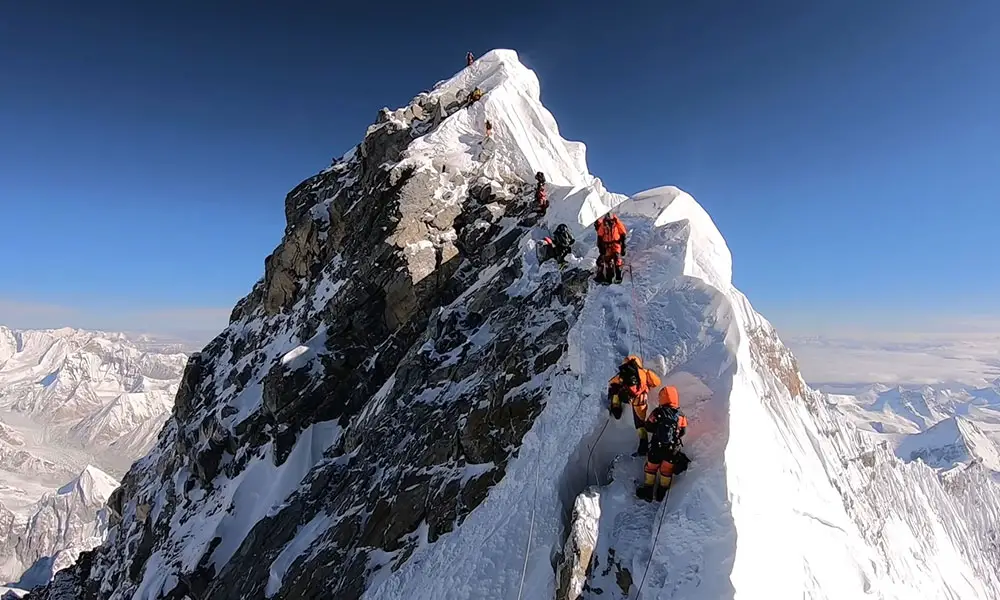
There are two seasons that are labeled best to climb Everest. They are pre-monsoon season, Spring, and post-monsoon season, Autumn. The timeframe of the pre-monsoon or Spring Season is from March to May, and the post-monsoon or Autumn Season is from September to November. Spring starts after the winter ends, and Autumn after the end of the monsoon. So it means that the weather begins to stabilize during these timeframes.
The temperature gets moderate, days become longer, and snowfall is less likely. It all resonates with a safe and sound expedition. In addition, there is minimal chance of storms, calamities like rockfalls and avalanches. Moreover, Spring and Autumn’s seasons bring lesser clouds to the Everest Region, allowing climbers to have clear visibility. It eventually contributes to a safe expedition.
Frequently Asked Questions
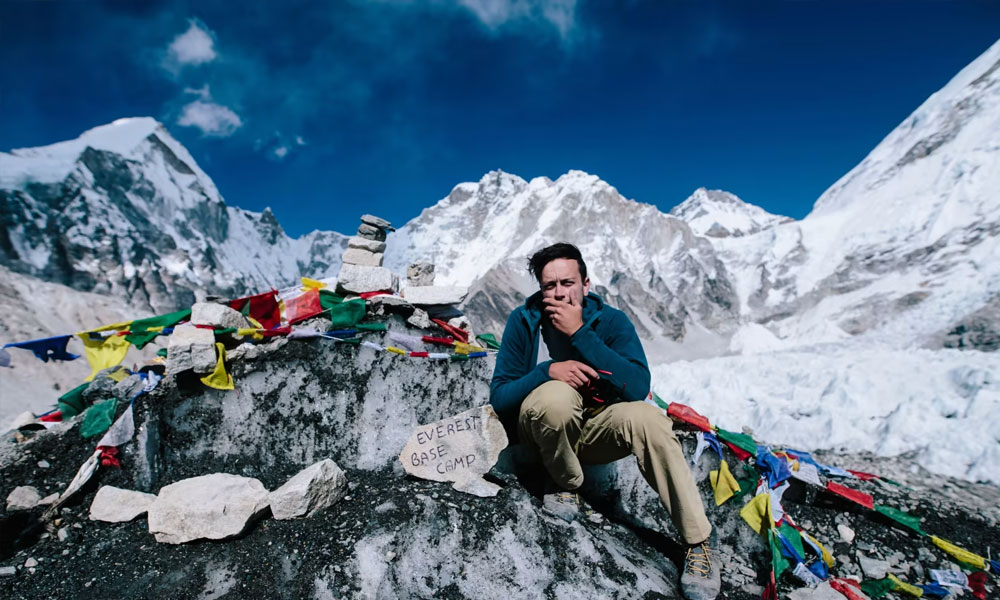
How long does it take to climb Mount Everest?
It takes around 6 to 10 weeks to climb Mount Everest. But it may vary based on the time of year, itinerary, and preparation.
How much does it cost to climb Mount Everest?
On average, climbing Mount Everest costs around $30,000 to $45,000. It might vary from one service provider to the other.
How difficult is it to climb Mount Everest?
Climbing Mount Everest is very challenging and strenuous. Steep slopes, challenging terrains, harsh weather, high altitude, and natural hazards are some factors that make the climb risky.
How dangerous is it to climb Mount Everest?
It is risky to climb Mount Everest. It poses several risks, such as altitude sickness, frostbite, avalanches, falls, etc. But with proper preparation and support from professional guides, climbers can make the most out of this expedition.
Do I need previous mountaineering experience to climb Mount Everest?
Yes, of course. It is mandatory to have previous mountaineering experience. Since Mount Everest poses several risk factors, it is necessary to have altitude training, technical climbing skills, acclimatization skills, and others for a safe climb.
How many people have successfully summited Mount Everest?
Till July 2022, around 6098 climbers have successfully climbed Mount Everest, which is an increasing rate.
Can I climb Mount Everest without a guide?
No. You can’t climb Mount Everest without a guide. It is mandatory to hire professional guides for this expedition. Climbers cannot even gain a climbing permit without a guide in Nepal.
What is the best time of year to climb Mount Everest?
Spring and Autumn are the best times to climb Mount Everest as they come with more stable weather and climate conditions than others.
How physically fit do I need to be to climb Mount Everest?
Everest Expedition is a challenging package, so it is necessary to be highly fit. Climbers must have prior mountaineering experiences, high cardiovascular endurance, muscle strength, and the ability to withstand prolonged exposure at high altitudes.
